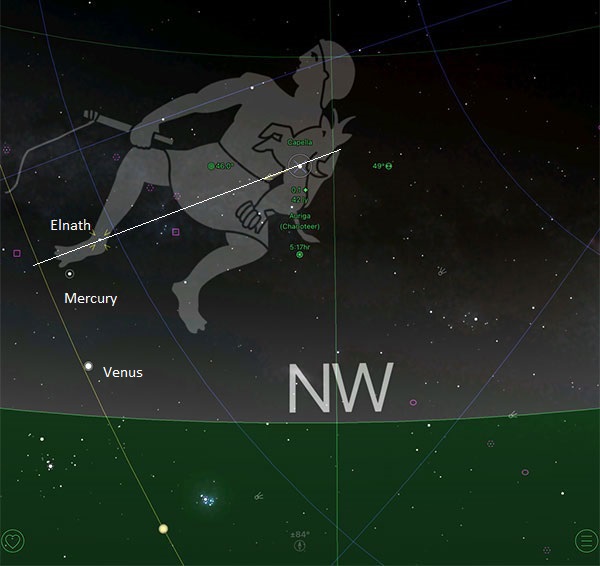Greetings from Palmia Observatory
Wow, who knew that Elon Musk would be one of the hosts on Saturday Night Live? Anyway, it was pretty funny.
There were a lot of skits with Elon as one of the characters including him in an old western movie theme and him again as a monetary expert and in a scenario as him solving a life support problem on the Mars colony with the help of another character, Chad, who did well but who unfortunately needed additional training. I'm not sure how Elon stacks up against other SNL hosts, but since I follow him all the time, I thought he was pretty funny!
 |
| Elon Musk: A wild and crazy guy (Source: Saturday Night Live) |
Some of the SNL jokes centered around Bitcoin and other crypto-currencies. Elon joked about Dogecoin, which resulted in wide swing in the market value of the currency. Hmm, I hope he doesn't get into trouble with the SEC or the FTC for the joke that jerked the markets around. I understand that network executives were worried about how Elon would control himself and Elon answered, and I am paraphrasing him here, "Hey, I have Asperger's syndrome, ignited the electric car industry and am building a rocket ship to go to Mars -- Did you actually think the evening was really just going to be normal?"
Anyway, if you haven't yet come up to speed on what crypto-currencies and blockchain, you might be interested in a free MIT Open Course Ware series of lectures on YouTube. It covers the technical nature of blockchain, in a low key way, and goes into the nature of electronic money and some of the functions and tradeoffs and new capabilities that it brings to the world. It is not on how to invest or trade in Bitcoin or other currencies. The discussion does cover the history of money and ledgers and banking and finance and legal issues. It covers the cryptography and transactional nature of blockchain, but if you want the technical details of prime number and random number generation and hash coding, this course is not the one for you. The videos are from an actual in person class so you get the usual student interruptions and discussions. The lecturer, Professor Gensler, is now the current SEC chairman. If you want to learn more about all of it, check out this first, of five, 2018 lectures at: https://www.youtube.com/watch?v=EH6vE97qIP4
 |
| Good introduction to Blockchain, Money and Crypto Currencies (Source: MIT OpenCourseWare) |
If you want a more technical description, check out the NIST publication "Blockchain Technology Overview."
Next up, let's check the Twitter feed from Boca Chica and and see what is happening to the Elon Musk Starship to Mars program. Here we see the successful Starship SN15, on the landing pad. The rocket landed pretty well on the pad, but it has now been moved to be exactly on the landing pad. Are we going to see this Starship take off again from this location? I don't know, but I do want to get back to Boca Chica and watch all the activity going on.
 |
| Space tourists look on as Starship SN15 rests on landing pad (Source: NASASpaceflight.com) |
There was also a tweet from Spadre, who shows a mixture of life in Boca Chica with starships and horses. Thanks for that, Spadre!
 |
| Starships and Horses in Boca Chica (Source: Spadre @SpacePadreIsle) |
One final note from the Boca Chica area is this scale drawing of the relative sizes of the SpaceX fabrication buildings alongside the heights of the various rockets including Starhopper, Starship, Super Heavy Booster and the stacked combination of Super Heavy Booster with a Starship mounted on top. The Integration Tower, standing out at 143 meters tall, will apparently help support the launch of the combined Booster/Starship and then, apparently, catch and grab the Super Heavy Booster when it returns to the launch pad. Is that actually the launch and recovery concept for the Super Heavy? Thanks to Felix at What About It!? for the images. Anyway you can see the progress being made by just comparing the sizes of the fabrication buildings and the rockets than come out of them. Go Elon!
 |
| Height comparison of some SpaceX Boca Chica facilities and rockets (Source: WAI, @FelixSchlang) |
Ok, let's finally return to some actual astrophysics that we might be able to duplicate from our own backyards. You know about the retrograde motion of the planets, which is really just their apparent motion when they sometimes appear to travel backwards in their orbital path around the sun.
This Wikipedia page on retrograde motion shows how this apparent backward motion comes about. As the Earth, for example, shown here in blue, goes about its orbital journey, another planet, shown here in red, can appear to go forward for a while and then go backward and then resume going forward. You can see that the effect is all due to the relative motion between the observer and the observed planet when compared to the background stars.
 |
| One way of explaining the apparent retrograde motion (Source: Wikipedia) |
It turns out that the retrograde motion can be seen at various time of the year. This retrograde forecast by astrosage.com shows that Mercury and Jupiter retrograde motions are coming up shortly. Mercury retrograde will begin on May 30 and end on June 23.
Now, observing Mercury is not always easy because of its apparent position in the sky is close to the sun and will be low on the horizon even when the sun has just barely set and will probably be hard to see. But it is not impossible and it is convenient to try measuring the retrograde motion now in May.
 |
| Calendar of planets in retrograde in 2021 (Source: Astrosage.com) |
So, this is our proposed observation plan. Find a good westward looking observation location with good viewing down to the horizon. Then take a photo of sky location with Mercury every day or so and plot its location on the sky with respect to some background stars. Then compare the location on the sky over observations taken between the middle of May and the end of June. If we are lucky we should be able to see Mercury move along in one direction on the sky and then reverse direction for a while and then turn around and go back in the original direction.
In looking at the sky charts we could use two conveniently located brighter stars, Elnath and Capella, as a fixed line from which to measure the motion of Mercury. It just means that we would have to gather a lot of photos and measurements over this 45 day period. Hmm, this sounds like a lot of work in order to go to a good observing location with horizon view and then take a single image on each observing day and plot the location of Mercury. Anybody else out there want to take this project on?
 |
| Using the fixed stars to plot Mercury's motion (Source: Palmia Observatory) |
Until next time, here from our burrow, stay safe, as we recover more of our freedom,

No comments:
Post a Comment